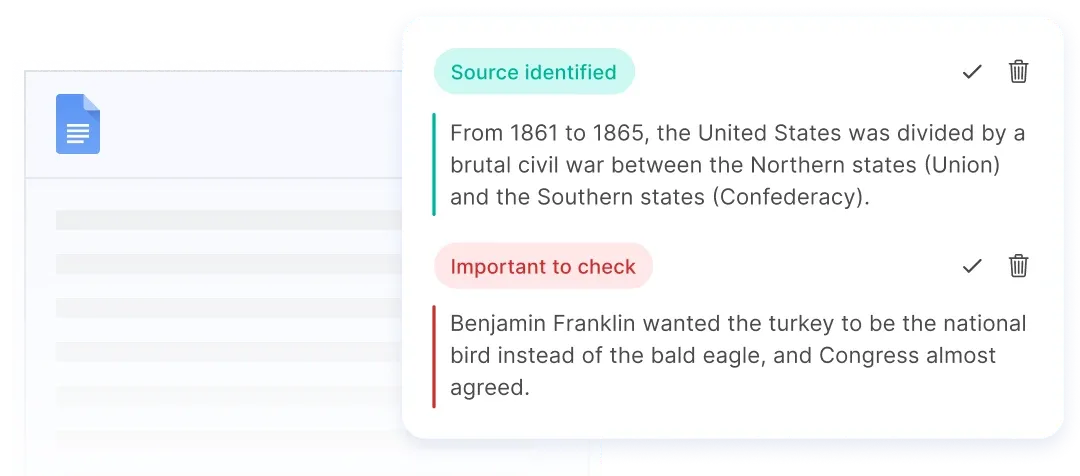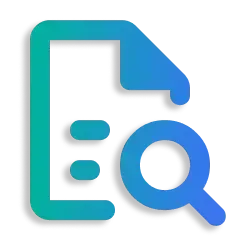L. Smith
MBA Student
I love how JustDone highlights specific sources. It really helps me understand what to change in my text to keep it unique!
Maintain the authenticity of your writing by identifying AI-generated content.
Trusted by Students from 3,000+ Leading Universities and Institutions
Go beyond AI detection — fix errors, reword flagged text, and upgrade your writing instantly.

Spotted AI-sounding text? Fix it instantly. Our tool doesn’t just detect robotic writing; it rewrites it in your natural voice with a single click. No tone lost, no time wasted.

Detect more than AI — determine facts from fiction too. With our integrated fact-checking tool, you can ensure everything you write is grounded and trustworthy.

Don’t guess what looks AI-written. Our Smart Reports highlight exactly which parts of your text need a human touch, so you can confidently edit, improve, and publish with clarity.
L. Smith
H. Tanaka
N. Wilson
A. Wong
O. Roberts
M. Rodriguez

JustDone is committed to promoting and protecting academic integrity. Our tools are designed to help students create authentic work. Before relying on suggestions from JustDone’s Detector, make sure you follow your institution’s or organization’s rules on how to credit AI support.

Enhance writing skills, create original content, and meet the academic requirements without plagiarism.

Easily spot and correct plagiarism to make sure that your work is one-of-a-kind.

Summarize with clarity, condensing complex ideas, highlighting key points, enhancing comprehension, and supporting focused learning with original, concise content.

Maintain originality by citing sources, paraphrasing accurately, and checking for originality before submitting your work. These steps benefit students in upholding academic integrity.
Frequently Asked Questions
What is an AI detector?
An AI detector is a tool that uses artificial intelligence to identify and analyze patterns, data, or objects. JustDone offers advanced AI detectors that can accurately analyze and detect various elements, providing valuable insights for content creation and optimization.
How does an AI detector work?
AI detectors work by processing large amounts of data using machine learning algorithms and models. JustDone's AI detector utilizes state-of-the-art AI technology to analyze and interpret information, delivering precise results for content generation and enhancement.
What can an AI detector detect?
An AI detector from JustDone can detect and analyze diverse content elements, such as images, text, keywords, and more. It can also identify patterns, trends, and anomalies, enabling users to leverage valuable insights for their content creation and optimization strategies.
How accurate is an AI detector?
JustDone's AI detector is highly accurate, leveraging cutting-edge AI models and algorithms to ensure precise detection and analysis. It employs advanced techniques to deliver reliable and insightful results for various content creation and optimization needs.
Can an AI detector improve content quality?
Yes, an AI detector from JustDone can significantly improve content quality by providing valuable feedback, identifying areas for enhancement, and offering relevant suggestions. It helps users create high-quality, engaging content with ease.
Is an AI detector user-friendly for content creators?
Absolutely! The JustDone AI detector is designed to be user-friendly, offering intuitive features and easy-to-use tools that empower content creators to leverage the full potential of artificial intelligence for their content creation and optimization endeavors.